Abstract
Total aerobic-facultative and anaerobic (clostridia) macrocolony count data are presented, with analysis and interpretation, for both haddock fillets and shucked soft-shelled clams which received doses of from 50,000 to 800,000 rad of Co60 gamma rays. These data indicated that haddock fillets may be maintained in good condition at refrigeration temperatures above freezing for about 1 week at 6 C, and approximately 2 weeks at 0 C, when treated with from 50,000 to 150,000 rad of ionizing radiation. In the dose range from 200,000 to 350,000 rad, the storage life may be extended up to some 2 weeks at 6 C, and 3 weeks at 0 C. Treatments in the dose range from 400,000 to 500,000 rad may defer spoilage for about 1 month, and doses of 550,000 to 650,000 rad afford protection against bacterial spoilage up to approximately 1.5 months. At the high substerilization doses of 700,000 to 800,000 rad, haddock fillets may be held for from 2 to 3 months in refrigerated storage before becoming unfit for marketing and consumption. Shucked soft-shelled clams can be held for about 2.5 weeks at 0 C and close to 12 days at 6 C, when given low substerilization doses of from 50,000 to 150,000 rad of ionizing radiation. At doses of from 200,000 to 350,000 rad, the clams may be preserved effectively for periods up to 3 weeks at 0 or 6 C, and some 6 weeks at these temperatures with doses of about 450,000 rad. With treatments of 500,000 to 600,000 rad, the storage life may be extended for some 2 months, and at doses of 650,000 to 800,000 rad the shucked clams remain in a good state of preservation for up to 3 months at temperatures of 0 to 6 C. Thus, it would appear that shucked soft-shelled clams may be maintained for significantly longer periods in refrigerated storage than haddock fillets when the same radiation treatments are applied to each product. Clostridia levels in both products were relatively low initially, and were reduced significantly by the gamma rays at the doses studied. Moreover, those clostridia that survived the radiation treatments were found to remain at safe, low levels during the various periods in refrigerated storage employed for these products, a very encouraging result from the public health, as well as commercial, standpoint.
Full text
PDF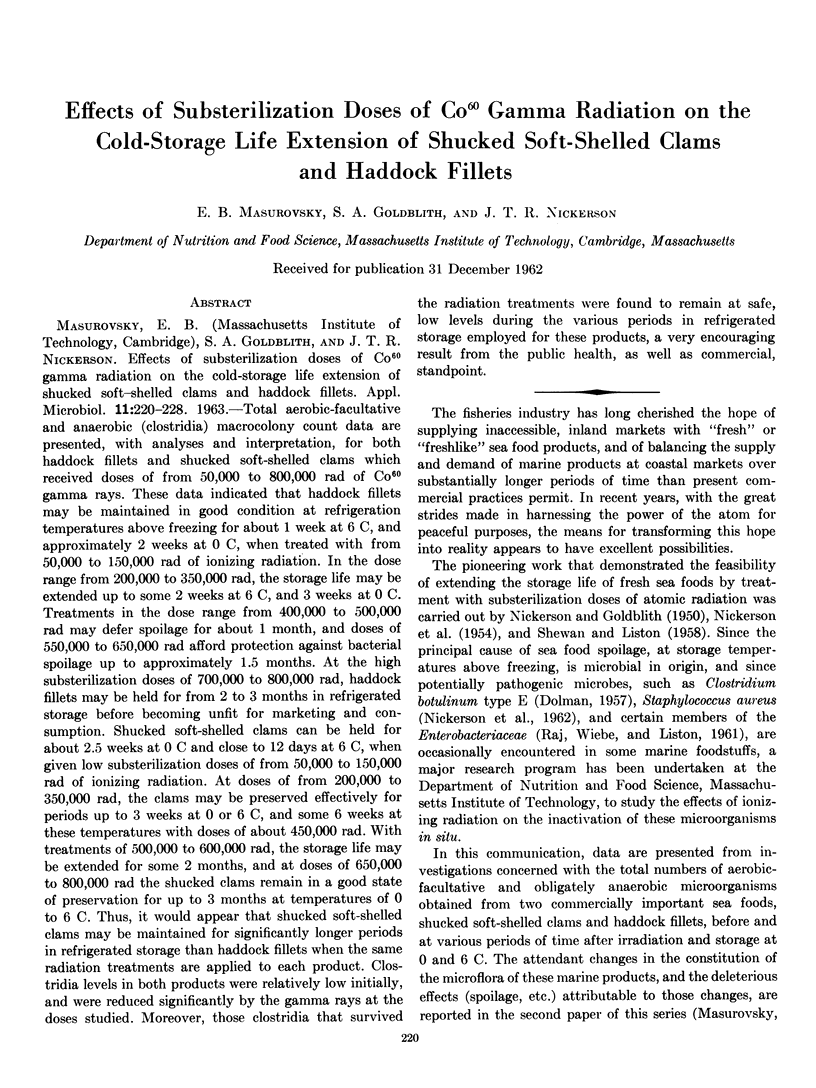
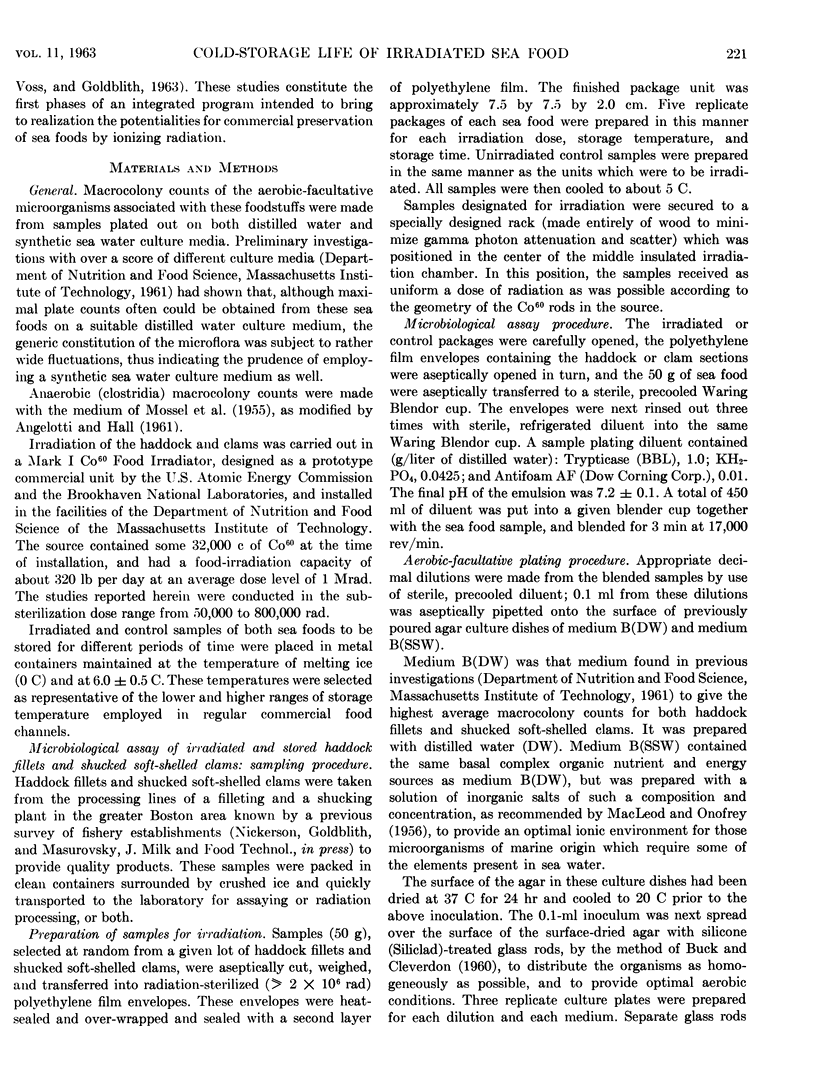
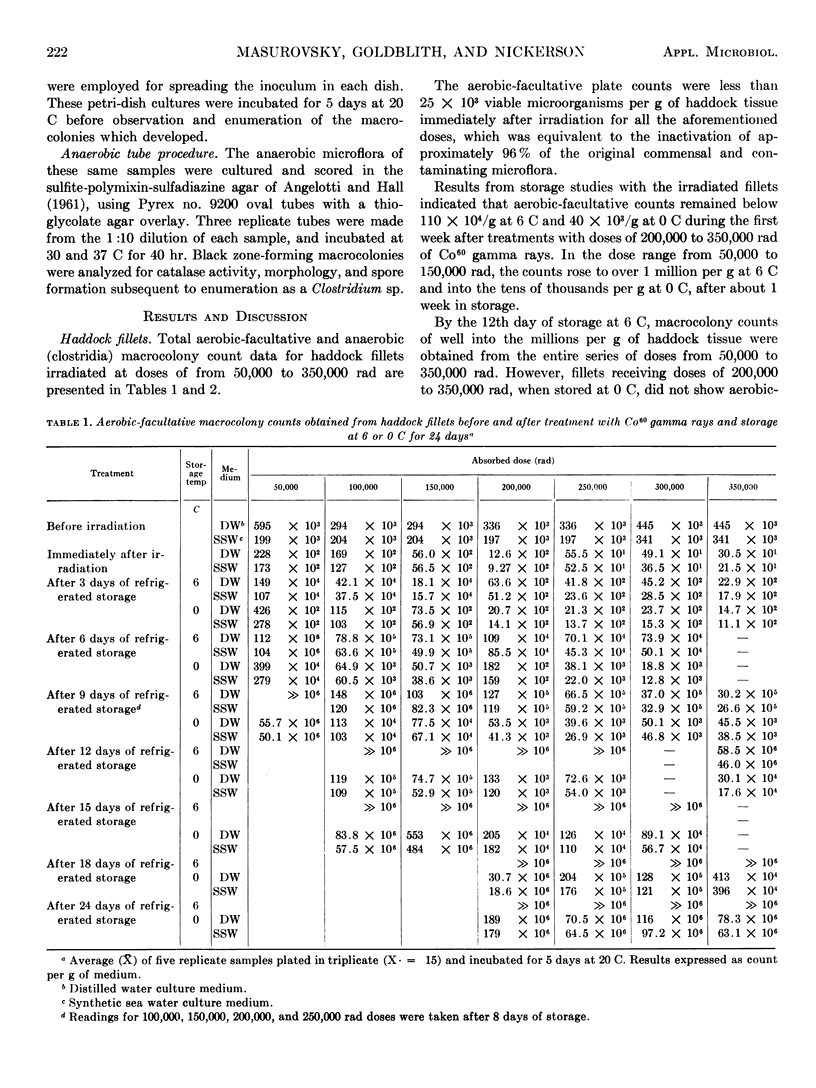
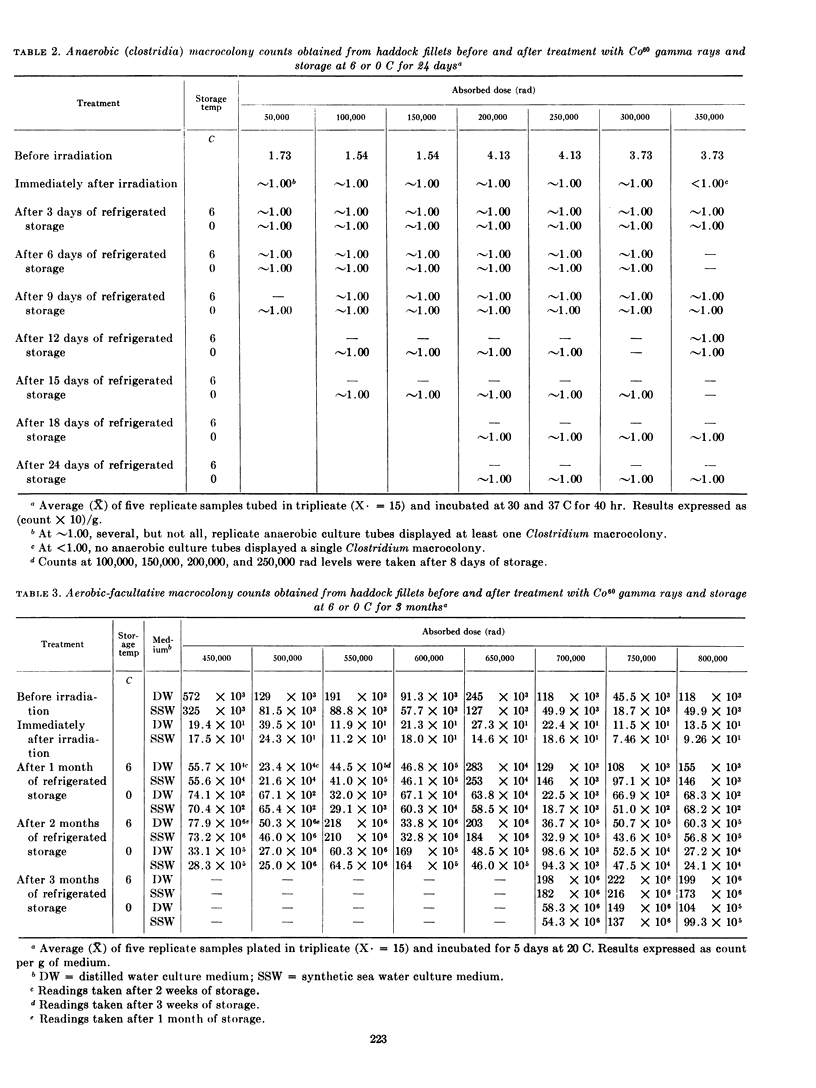
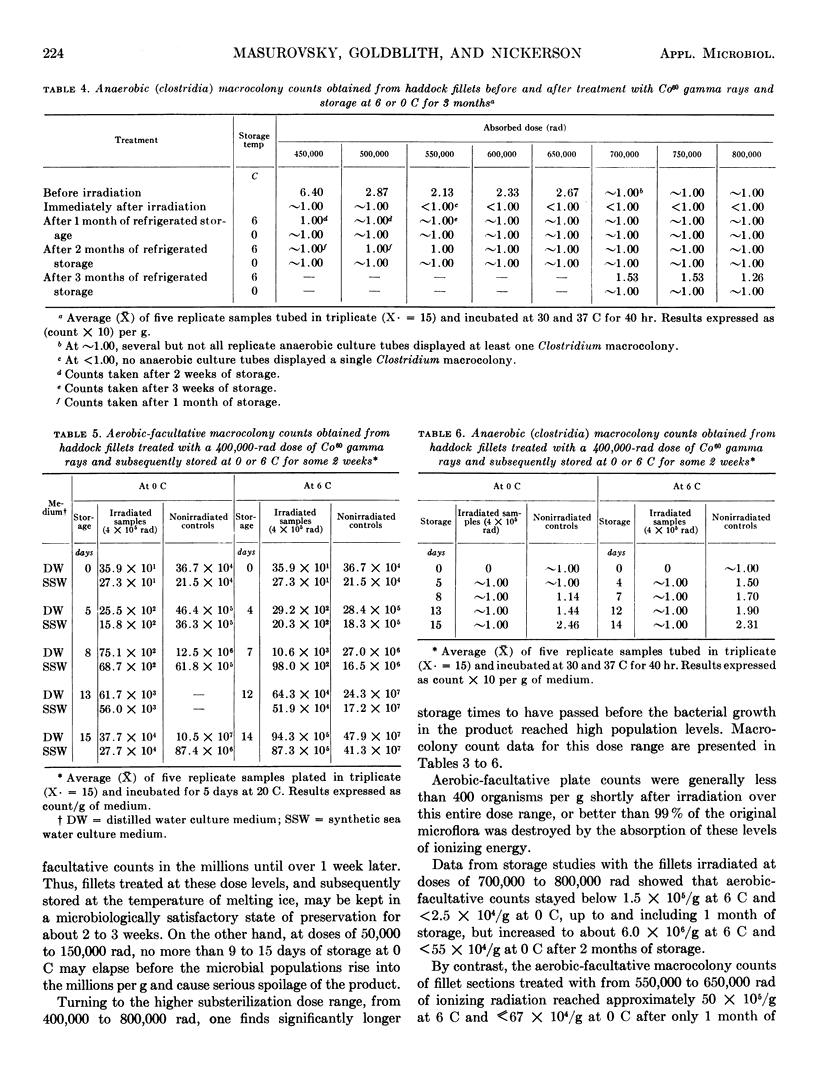
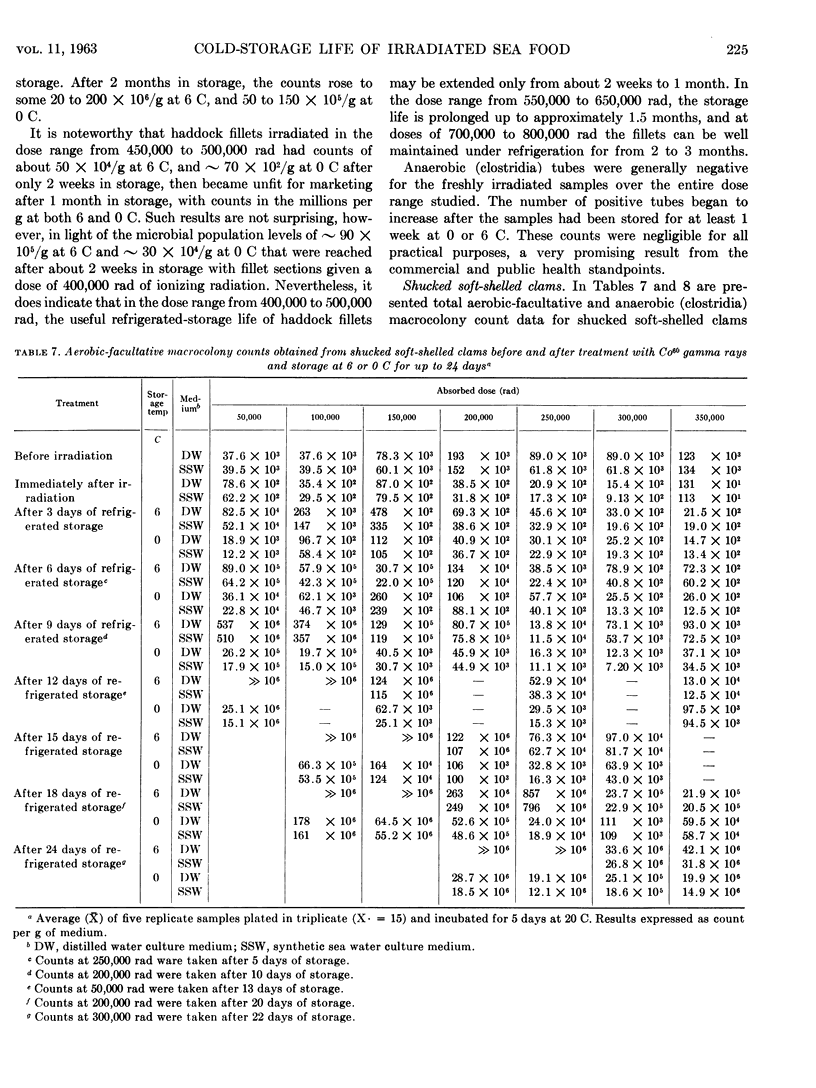
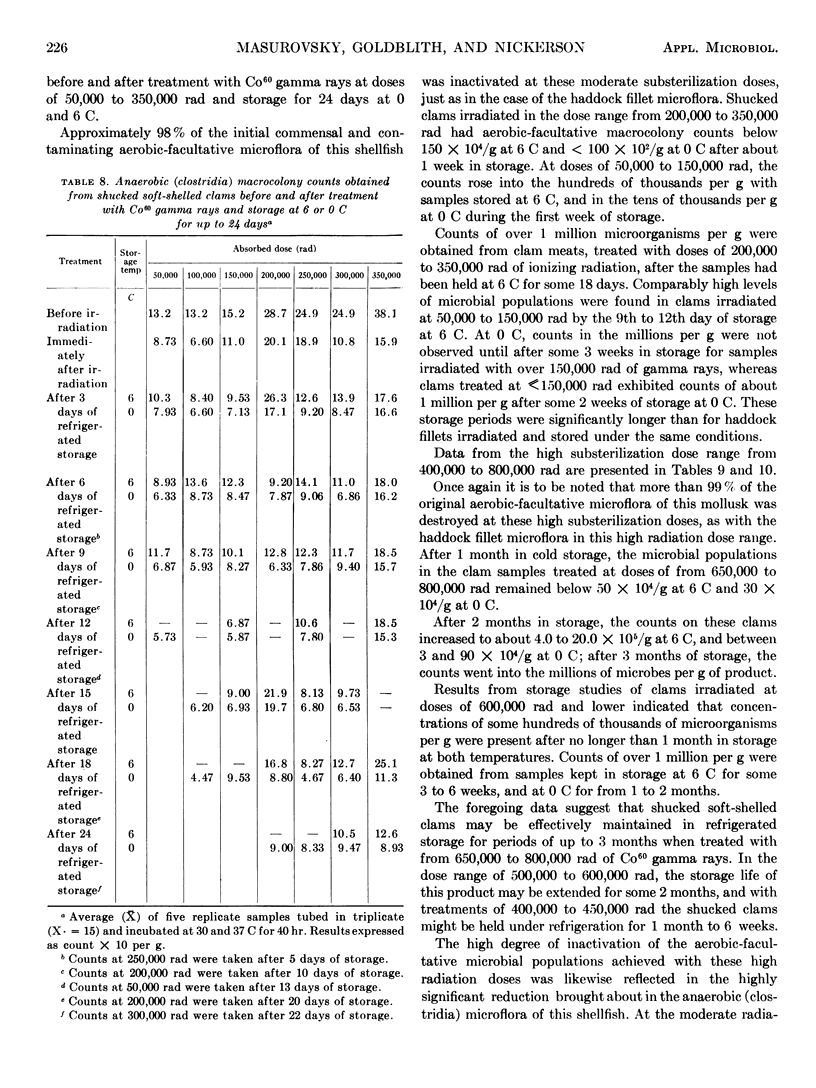
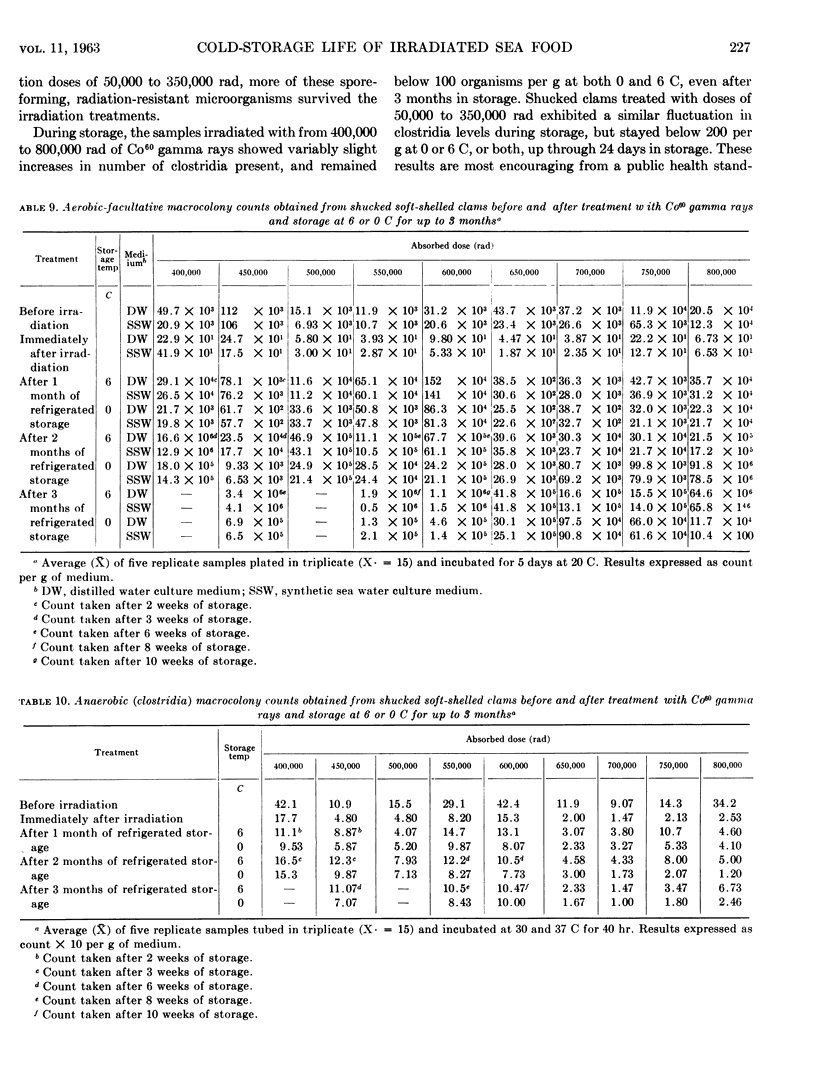
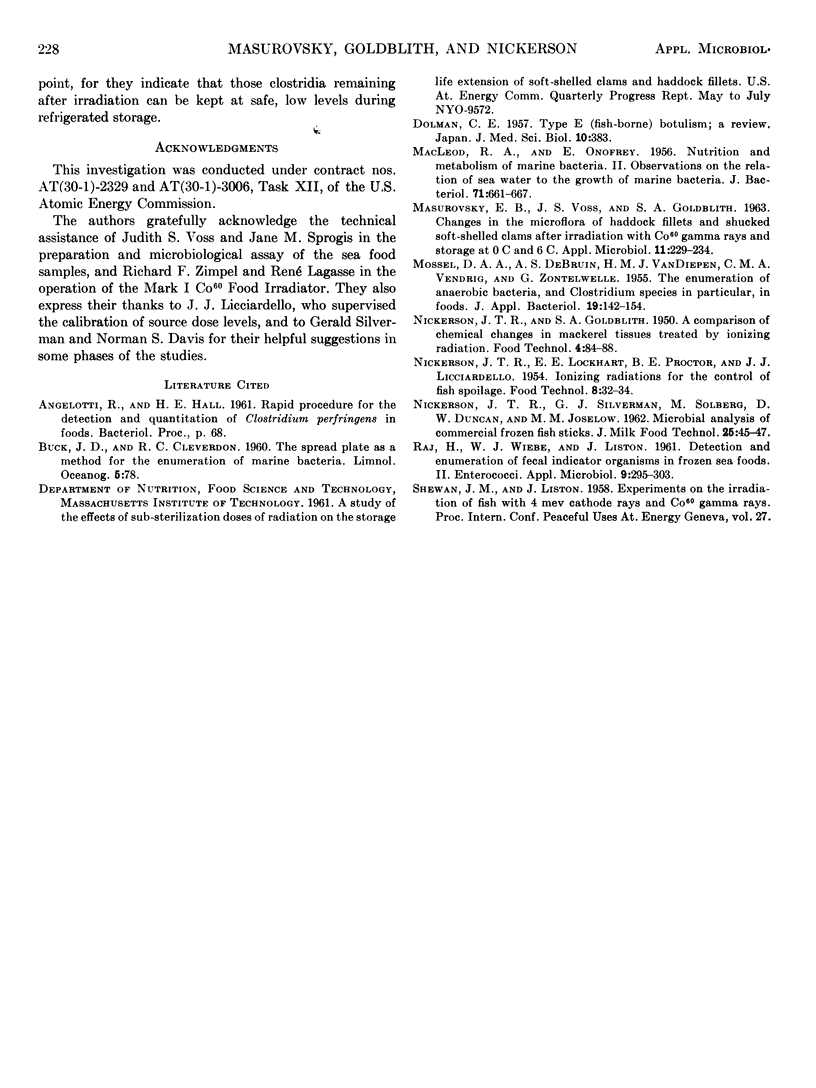
Selected References
These references are in PubMed. This may not be the complete list of references from this article.
- DOLMAN C. E. Type E (fish-borne) botulism: a review. Jpn J Med Sci Biol. 1957 Dec;10(6):383–395. doi: 10.7883/yoken1952.10.383. [DOI] [PubMed] [Google Scholar]
- MACLEOD R. A., ONOFREY E. Nutrition and metabolism of marine bacteria. II. Observations on the relation of sea water to the growth of marine bacteria. J Bacteriol. 1956 Jun;71(6):661–667. doi: 10.1128/jb.71.6.661-667.1956. [DOI] [PMC free article] [PubMed] [Google Scholar]
- MASUROVSKY E. B., VOSS J. S., GOLDBLITH S. A. Changes in the microflora of haddock fillets and shucked soft-shelled clams after irradiation with Co-60 gamma rays and storage at 0 C and 6 C. Appl Microbiol. 1963 May;11:229–234. doi: 10.1128/am.11.3.229-234.1963. [DOI] [PMC free article] [PubMed] [Google Scholar]
- RAJ H., WIEBE W. J., LISTON J. Detection and enumeration of fecal indicator organisms in frozen sea foods. II. Enterococci. Appl Microbiol. 1961 Jul;9:295–303. doi: 10.1128/am.9.4.295-303.1961. [DOI] [PMC free article] [PubMed] [Google Scholar]


